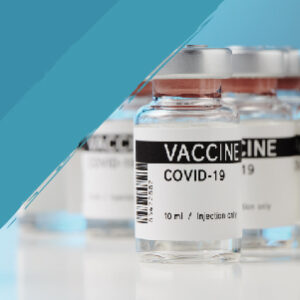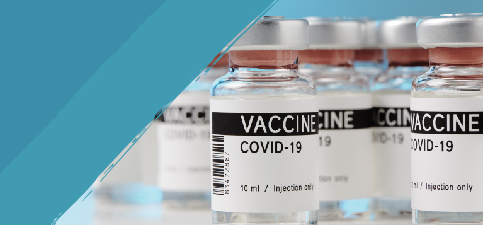State and local government agencies are struggling to meet the challenges of rolling out a nationwide vaccine. Millions of vaccines have already been given, but there are still many who have yet to get their first dose. And, as new strains emerge, new or updated vaccines may need to be administered. Government agencies must prepare for the future in addition to handling today’s challenges.
It’s not just a logistical problem of distribution, it’s also an information problem. Residents need questions answered. They need to know about eligibility and availability of appointments. They need to make appointments. And all of this information needs to be up-to-date in a fluid situation.
Many agencies are overwhelmed with requests for basic information about the vaccine or appointments. This is huge challenge for state and local governments, and some systems are failing under the weight of demand. Call volumes can overwhelm even the most prepared call centers, and many online systems aren’t built to handle the strain.
 Anxious residents make appointments with retail vendors as well as states. If a resident gets a retail appointment first, they usually won’t cancel the state appointment. Vaccines must be administered within four to six hours; numerous no-shows risk wasting vaccine. Vaccination capacity is not achieved if appointment times are left unfilled, and this has a negative impact on the whole process.
Anxious residents make appointments with retail vendors as well as states. If a resident gets a retail appointment first, they usually won’t cancel the state appointment. Vaccines must be administered within four to six hours; numerous no-shows risk wasting vaccine. Vaccination capacity is not achieved if appointment times are left unfilled, and this has a negative impact on the whole process.
Improving the Customer Experience
Fortunately, the right technology not only helps supply information and coordinate appointments, but it can also free up staff for more critical tasks. With a customer experience solution, agencies can leverage AI, automation, and self-service across all contact channels. They can keep the community informed while allowing essential workers to focus on mission critical operations.
Reducing Interaction Volume: The most important task for government agencies is providing essential information to residents without overwhelming staff resources. Most residents don’t need to need to interact with a live agent—whose time is best spent handling the most difficult situations.
AI-powered voice and chat bots can remove the burden from human agents by promoting self-service options and automating answers to requests. Bots must be armed with information, including vaccine FAQs, the agency’s knowledge base, CDC information, etc. They must also escalate inquiries if necessary, seamlessly transitioning to human agents who have the information to pick up where the bot left off. With the right customer experience solution, residents easily find the information they need without long waits, freeing up the staff to focus on high value work.
Smarter Scheduling: A customer engagement solution can automate the handlings of appointment information, allowing automated scheduling and sending out appointment reminders through the resident’s channel of choice: email, phone, or text. By providing the option to cancel or reschedule with an appointment reminder, the system reduces the number of no-shows.
Scheduling Optimization: The right solution optimizes vaccine rates with proactive scheduling, automatically offering available time slots to residents on a waiting list. If a resident cancels an appointment, then someone on the waiting list will be automatically notified and given an opportunity to take the appointment so vaccines aren’t wasted.
Predictive Analytics: Self-service options can be enhanced with predictive analytics. The solution monitors every visitor’s website activity, noting which pages they visit and for how long. It can then offer to redirect them to another page or to self-serve options. The resident gets information or appointments without human intervention.
Proactive Engagement: Government agencies don’t have to wait for residents to call; many customer engagement solutions allow agencies to proactively reach out to residents. Likewise, the system can send notifications about unforeseen conditions like weather or a vaccine shortage so appointments can be rescheduled.
How the System Works
Below is a step-by-step description of how a good customer engagement solution would handle a specific customer.
Step 1. Mary hears that her county is administering vaccines. She calls the county health department to schedule an appointment and get answers to vaccine questions.
Step 2. Because of the high call volumes and resource constraints, Mary’s call is answered by a voice bot rather than a live person. The bot can be regularly updated to include new or region-specific information.
Step 3. The voice bot directs Mary to a website to register for an appointment, but when she visits the site there are no appointments available.
Step 4. When Mary visits a certain page, the solution’s predictive analytics are triggered. A bot offers to redirect her to other self-serve options and asks if she has any questions. She asks if the vaccine contains eggs because she has an allergy. Using AI technology, the bot answers the question—without having to engage a human agent.
Step 5. Knowing there are no appointments available, the bot asks Mary if she would like to be notified when an appointment becomes available. She chooses that option and her preferred notification method.
Step 6. A few days later Mary receives a notification that a vaccine is available and a link for scheduling an appointment. Closer to her appointment time, proactive notifications provide appointment reminders, information about pre-vaccine prep, and a chance to cancel or reschedule.
Step 7. Mary gets her shot; her customer journey is complete.
View our webinar to learn more about how to inform your community and allow frontline workers to focus on vaccine administration and other mission-critical operations.







